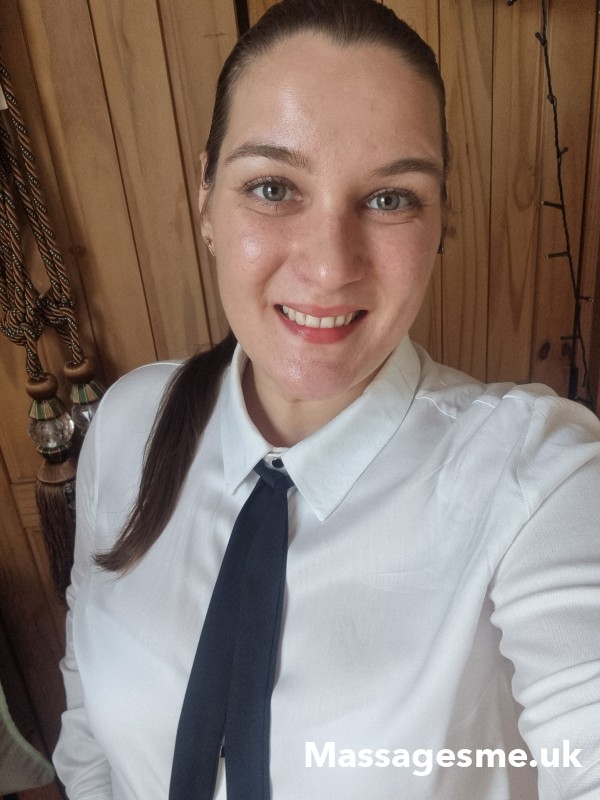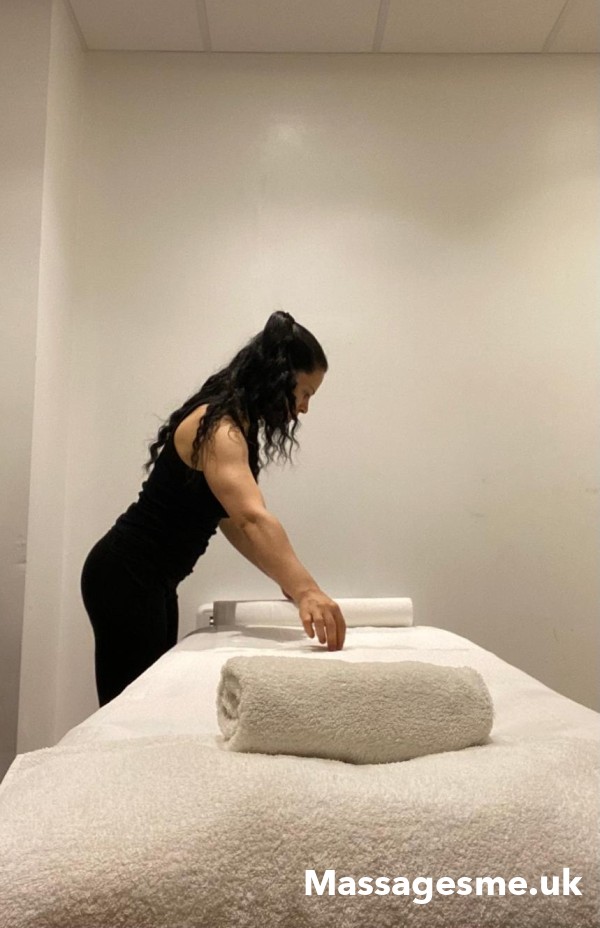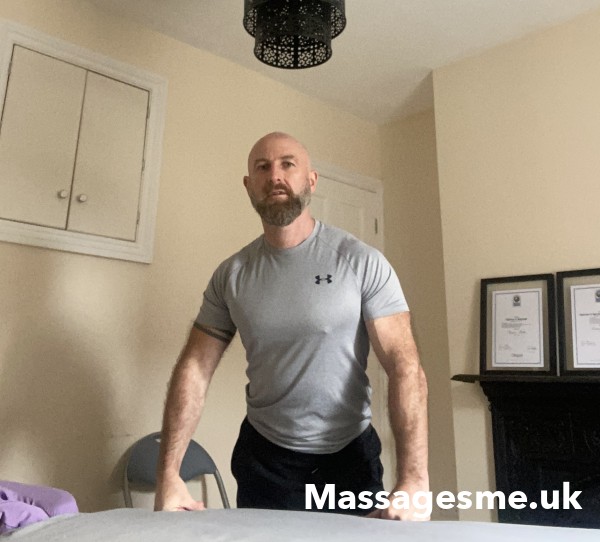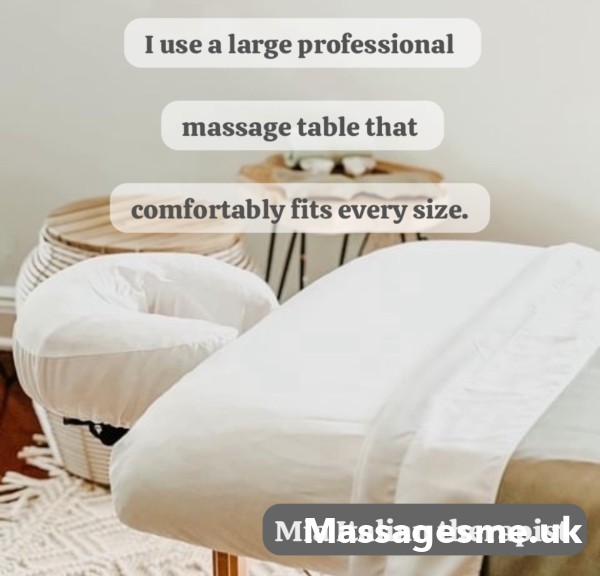Myofascial release massage represents one of the most sophisticated and scientifically validated approaches to addressing chronic pain, movement dysfunction, and structural imbalances within contemporary therapeutic bodywork practice. This manual therapy technique targets the complex fascial network surrounding muscles, organs, and other structures throughout the human body, utilising sustained pressure and specific movement patterns.
Myofascial Release restores tissue mobility and eliminates pain patterns that conventional massage approaches often cannot adequately address. Rooted in extensive anatomical research and clinical application, myofascial release has emerged as a vital therapeutic intervention for numerous conditions affecting millions of individuals in the United Kingdom.
Understanding Fascia: The Body's Connective Tissue Matrix
Fascia represents one of the human body's most extensive and influential tissue systems, forming a continuous three-dimensional web of connective tissue that surrounds, supports, and interconnects every muscle, bone, organ, nerve, and blood vessel throughout the body. This remarkable tissue system, composed primarily of collagen and elastin fibres embedded in a gel-like ground substance, serves multiple critical functions, including structural support, force transmission, proprioception, and coordination of the immune system.
Contemporary fascial research has revolutionised our understanding of this tissue system, revealing its role as an active, dynamic network capable of contraction, communication, and adaptation. Unlike traditional anatomical models that viewed fascia as passive "packing material," modern science recognises fascia as a sophisticated sensory organ containing more nerve endings than muscle tissue itself, making it a crucial component in pain perception, movement coordination, and overall body function.
Fascial System Components and Functions
Types of Fascia:
- Superficial Fascia: Layer beneath skin containing fat, blood vessels, and lymphatic structures
- Deep Fascia: Dense connective tissue surrounding muscles, bones, and organs
- Visceral Fascia: Specialised fascia surrounding and supporting internal organs
- Meningeal Fascia: Protective covering of brain and spinal cord
- Fascial Planes: Continuous sheets allowing smooth movement between structures
Primary Functions:
- Structural Support: Maintaining body shape and organisational integrity
- Force Transmission: Distributing mechanical forces throughout the body
- Proprioception: Providing sensory feedback about body position and movement
- Circulatory Support: Facilitating blood and lymphatic flow
- Immune Function: Supporting immune system surveillance and response
- Metabolic Function: Influencing cellular metabolism and tissue repair
Myofascial Pain Syndrome and Fascial Dysfunction
Myofascial pain syndrome represents a complex chronic pain condition characterised by the development of trigger points within muscle tissue and associated fascial restrictions that create persistent pain patterns, movement limitations, and functional impairments affecting daily activities and quality of life.
Trigger Point Characteristics and Development
Active Trigger Points: Hypersensitive spots within muscle tissue that produce spontaneous pain and refer pain to distant areas. These points are tender to palpation and produce characteristic pain patterns that patients can recognise as familiar symptoms.
Latent Trigger Points: Dormant areas of dysfunction that do not produce spontaneous pain but may cause movement restrictions, muscle weakness, and increased susceptibility to injury. These points become painful only when directly compressed.
Common Trigger Point Locations:
- Upper Trapezius: Causing neck pain, headaches, and shoulder tension
- Levator Scapulae: Creating neck stiffness and shoulder blade pain
- Suboccipital Muscles: Producing tension headaches and cervical dysfunction
- Piriformis: Causing deep buttock pain and potential sciatic nerve irritation
- Quadratus Lumborum: Creating lower back pain and hip dysfunction
- Gastrocnemius: Producing calf pain and potential referred knee symptoms
Professional Myofascial Release Techniques and Approaches
Contemporary myofascial release encompasses various sophisticated methodologies, each developed through extensive clinical research and refined for specific therapeutic applications and patient presentations.
Direct Myofascial Release (Deep Pressure Approach)
Intensive technique applying sustained pressure directly to fascial restrictions using thumbs, elbows, or specialised tools. The practitioner engages the restriction and maintains pressure until tissue release occurs, typically requiring 90 to 300 seconds of sustained pressure. This approach targets specific adhesions and trigger points whilst promoting structural realignment.
Technical Application:
- Pressure application: 5-15 pounds per square inch
- Duration: 90-300 seconds per restriction
- Depth: Progressively deeper as tissue releases
- Movement: Minimal practitioner movement, allowing tissue to guide release
- Assessment: Continuous monitoring of tissue response and release patterns
Indirect Myofascial Release (Gentle Unwinding Approach)
Gentle approach following the direction of tissue ease rather than restriction. The practitioner applies light pressure and allows the tissue to guide the direction of release, often incorporating spontaneous movement patterns and unwinding motions that emerge naturally during treatment.
Therapeutic Principles:
- Pressure application: 2-5 pounds per square inch
- Duration: 3-5 minutes per area
- Direction: Following tissue preference rather than forcing change
- Movement: Encouraged spontaneous movement and unwinding patterns
- Integration: Emphasis on whole-body patterns and compensation
Instrument-Assisted Soft Tissue Mobilisation (IASTM)
Advanced technique utilising specialised tools to enhance the precision and effectiveness of fascial release. Instruments amplify tactile feedback whilst reducing practitioner fatigue, allowing for more precise treatment of specific restrictions and broader coverage of fascial planes.
Structural Integration Approaches
Comprehensive methodology addressing whole-body fascial patterns and postural alignment through systematic treatment protocols. This approach recognises the interconnected nature of fascial restrictions and addresses global patterns rather than isolated symptoms.
Clinical Applications and Evidence-Based Benefits
Extensive research has established myofascial release's efficacy across numerous health conditions, with systematic reviews and clinical trials providing robust evidence for its therapeutic applications.
| Condition | Evidence Level | Primary Benefits | Typical Treatment Duration |
|---|---|---|---|
| Chronic Myofascial Pain | Grade A (Strong) | Pain reduction, trigger point elimination, function improvement | 8-12 sessions over 6-8 weeks |
| Fibromyalgia | Grade A (Strong) | Pain relief, sleep improvement, quality of life enhancement | 12-20 sessions over 10-16 weeks |
| Chronic Lower Back Pain | Grade B (Moderate) | Functional improvement, pain reduction, mobility enhancement | 6-10 sessions over 4-6 weeks |
| Headaches and Migraines | Grade B (Moderate) | Frequency reduction, intensity decrease, trigger elimination | 6-12 sessions over 6-10 weeks |
| Plantar Fasciitis | Grade B (Moderate) | Pain relief, mobility improvement, functional restoration | 4-8 sessions over 4-6 weeks |
| Temporomandibular Disorders | Grade C (Emerging) | Jaw mobility, pain reduction, function improvement | 6-10 sessions over 6-8 weeks |
Quantitative Research Outcomes
- Pain Reduction: 40-70% decrease in visual analogue scale scores across multiple studies
- Range of Motion: 15-35% improvement in joint mobility and flexibility measures
- Functional Capacity: 25-50% enhancement in daily activity performance scores
- Quality of Life: Significant improvements in standardised quality of life assessments
- Sleep Quality: 30-60% improvement in sleep efficiency and duration measures
- Medication Reduction: 20-40% decrease in pain medication usage in chronic pain patients
What to Expect During Professional Treatment
Professional myofascial release sessions follow structured protocols ensuring optimal therapeutic outcomes whilst maintaining patient comfort and safety throughout the treatment process.
Comprehensive Assessment Protocol
Initial evaluations include thorough examination covering:
- Postural Analysis: Static and dynamic posture evaluation identifying compensation patterns
- Movement Assessment: Functional movement screening revealing restrictions and asymmetries
- Palpatory Examination: Systematic fascial palpation identifying restrictions, trigger points, and tissue quality
- Pain Pattern Mapping: Detailed documentation of pain locations, referral patterns, and trigger point distributions
- Medical History Review: Comprehensive evaluation of conditions, injuries, and previous treatments
- Functional Goal Setting: Establishment of realistic treatment objectives and outcome measures
Professional Treatment Session Structure
Standard myofascial release sessions typically follow this protocol:
- Re-assessment and Planning (5-10 minutes): Review of previous session responses and treatment modification
- Warm-Up and Preparation (10 minutes): Gentle tissue preparation and circulation enhancement
- Fascial Assessment (5-10 minutes): Detailed palpation and restriction identification
- Direct Release Work (20-30 minutes): Targeted treatment of primary restrictions and trigger points
- Indirect Release Integration (10-15 minutes): Whole-body pattern integration and unwinding
- Movement Integration (5-10 minutes): Active movement to integrate tissue changes
- Home Care Education (5 minutes): Self-treatment techniques and exercise prescription

Specialised Applications and Advanced Techniques
Myofascial release adapts to address specific patient populations and complex conditions requiring specialised approaches and advanced clinical reasoning.
Chronic Pain Management Protocols
Complex Regional Pain Syndrome: Gentle, graduated approaches addressing central sensitisation and autonomic dysfunction through careful fascial work and nervous system modulation. Treatment emphasises graded exposure and systematic desensitisation.
Chronic Pain Adaptations:
- Reduced pressure application (1-3 pounds per square inch initially)
- Shorter treatment sessions (30-45 minutes)
- Increased treatment frequency (2-3 times weekly)
- Emphasis on indirect techniques and gentle unwinding
- Integration with pain education and psychological support
Sports Performance and Injury Prevention
Athletic Population Applications: Performance-focused protocols addressing sport-specific movement patterns, preventing overuse injuries, and optimising biomechanical efficiency through strategic fascial release and movement integration.
Athletic Benefits:
- Enhanced power output and movement efficiency
- Reduced injury risk through improved tissue quality
- Faster recovery between training sessions
- Improved proprioception and movement awareness
- Sport-specific movement pattern optimisation
Professional Standards and Safety Protocols
Myofascial release requires specialised training, advanced anatomical knowledge, and adherence to established safety protocols ensuring client protection and treatment effectiveness.
Professional Qualification Requirements
- Advanced Massage Therapy Certification: Minimum 500 hours foundational training with anatomy emphasis
- Myofascial Release Specialisation: Advanced certification in fascial techniques (40-100 hours)
- Pain Science Education: Understanding of chronic pain mechanisms and central sensitisation
- Structural Assessment Skills: Training in postural analysis and movement evaluation
- Clinical Reasoning: Ability to develop treatment plans based on assessment findings
- Continuing Education: Ongoing professional development in fascial research and techniques
Contraindications and Safety Considerations
While generally safe when properly administered, certain conditions require careful consideration or contraindicate myofascial release:
Absolute Contraindications:
- Acute fractures or suspected bone injuries
- Active cancer in treatment areas
- Severe osteoporosis with fracture risk
- Acute infections or cellulitis
- Open wounds or severe skin conditions
- Severe cardiovascular conditions or uncontrolled hypertension
Relative Contraindications (Requiring Modified Approach):
- Pregnancy (requiring specialised prenatal training)
- Recent surgery or healing tissues
- Blood clotting disorders or anticoagulant therapy
- Severe fibromyalgia or chronic fatigue syndrome
- Complex regional pain syndrome or central sensitisation
- Mental health conditions affecting pain perception
Self-Care and Home Management Techniques
Effective myofascial release treatment includes patient education for self-management techniques, supporting professional treatment outcomes, and maintaining progress between sessions.
Self-Myofascial Release Techniques
- Foam Rolling Protocols: Systematic self-massage using foam rollers for maintenance and prevention
- Tennis Ball Techniques: Targeted self-treatment for specific trigger points and restrictions
- Stretching Integration: Dynamic and static stretches addressing fascial length and mobility
- Movement Patterns: Corrective exercises addressing postural dysfunction and compensation
- Breathing Techniques: Diaphragmatic breathing supporting fascial relaxation and stress management
- Hydration Protocols: Optimal fluid intake supporting fascial tissue health and mobility
Myofascial Release Pricing and Healthcare Integration
Understanding myofascial release pricing reflects the specialised nature of this intervention and the advanced training required for safe, effective practice.
UK Myofascial Release Massage Pricing (2025)
Specialist Therapeutic Clinics:
- Initial Assessment and Treatment (90-120 minutes): £80-£150
- Standard Treatment Session (60 minutes): £60-£110
- Intensive Treatment Session (90 minutes): £90-£160
- Structural Integration Series (10-12 sessions): £600-£1200
Spa and Wellness Centre Pricing:
- Myofascial Release Session (60 minutes): £55-£100
- Combined with Deep Tissue (75 minutes): £70-£120
- Sports Performance Package (90 minutes): £85-£150
Mobile Therapy Pricing:
- Home Visit Standard Session: £60-£110 plus travel charges
- Chronic Pain Management: £70-£120 plus equipment fees
- Travel and Equipment Charges: £10-£25 depending on distance and tools required
Healthcare Integration and Professional Recognition
- Physiotherapy Integration: Commonly used within NHS and private physiotherapy clinics
- Pain Management Programmes: Recognised intervention within multidisciplinary pain clinics
- Sports Medicine: Standard practice in professional sports and athletic performance centres
- Occupational Health: Workplace injury prevention and management applications
- Insurance Coverage: Potential coverage through private health insurance for chronic conditions
Client Experiences and Treatment Outcomes
"After 15 years of chronic fibromyalgia, I had tried every treatment available with minimal success. Myofascial release therapy finally addressed the deep tissue restrictions that other treatments had been unable to reach. The combination of direct pressure work and gentle unwinding techniques has reduced my pain levels by 70% and given me my life back. I can now work full-time and enjoy activities I thought were lost forever." — Dr. Helen Matthews, University Professor, Oxford
"As a professional rugby player, myofascial release has become essential for both performance and injury prevention. The work addresses muscle restrictions and fascial patterns that develop from intensive training and competition. My therapist's understanding of sports biomechanics and fascial anatomy has helped me maintain peak performance whilst avoiding the chronic injuries that plagued my earlier career." — Marcus Williams, Professional Rugby Player, Cardiff Blues
"Following a serious car accident, I developed complex chronic pain that affected every aspect of my life. Traditional treatments provided only temporary relief until I discovered myofascial release. The systematic approach to addressing whole-body patterns rather than just symptoms has been transformative. After 6 months of treatment, I'm pain-free and have returned to activities I never thought possible again." — Jennifer Thompson, Physiotherapist, Edinburgh
"Working as a dentist means spending hours in compromised positions that create severe neck and shoulder problems. Myofascial release therapy addressed not just the painful trigger points but the underlying fascial restrictions causing my postural problems. The treatment has eliminated my chronic headaches and allowed me to continue my career without constant pain." — Dr. Sarah Patel, Dental Surgeon, Manchester
Integration with Other Therapeutic Modalities
Myofascial release integrates effectively with various therapeutic interventions for comprehensive treatment approaches:
- With Sports Massage: Enhanced muscular release and comprehensive soft tissue treatment
- With Acupuncture: Complementary approaches to trigger point deactivation and pain management
- With Hot Stone Massage: Thermal preparation enhancing fascial pliability and treatment effectiveness
- With Physiotherapy: Movement rehabilitation and corrective exercise integration
- With Aromatherapy: Essential oils supporting relaxation and anti-inflammatory effects
The Future of Myofascial Release in UK Healthcare
Myofascial release continues evolving through research advances, technology integration, and expanding recognition within evidence-based healthcare.
Current Development Trends
- Research Expansion: Ongoing clinical trials investigating mechanisms and applications
- Technology Integration: Ultrasound elastography and biomechanical analysis enhancing assessment precision
- Professional Standardisation: Enhanced training requirements and certification standards
- Healthcare Integration: Increased recognition within NHS and private healthcare settings
- Pain Science Integration: Modern pain understanding informing treatment approaches
- Preventive Applications: Growing focus on injury prevention and performance optimisation
Conclusion: Advancing Healthcare Through Fascial Science
Myofascial release massage represents a sophisticated therapeutic intervention that addresses one of the body's most extensive and influential tissue systems through evidence-based manual therapy techniques. As our understanding of fascial anatomy and function continues expanding, the therapeutic applications of myofascial release have grown to encompass not only pain management but also performance enhancement, injury prevention, and structural optimisation.
The key to successful myofascial release outcomes lies in working with appropriately qualified practitioners who possess advanced technical skills, comprehensive anatomical knowledge, and an understanding of pain science principles. When integrated thoughtfully into comprehensive treatment plans, myofascial release provides measurable benefits that extend far beyond symptom relief, resulting in lasting structural improvements and an enhanced quality of life.
Whether addressing chronic pain conditions, sports performance optimisation, or postural dysfunction, myofascial release offers a scientifically validated therapeutic intervention that honours both the complexity of human fascial anatomy and the potential for significant functional improvement through skilled manual therapy.
Begin Your Myofascial Release Journey
Discover the transformative benefits of professional myofascial release massage by connecting with qualified fascial therapy specialists through Massages Me UK. Our comprehensive platform features experienced practitioners trained in advanced myofascial techniques and chronic pain management throughout England, Scotland, Wales, and Northern Ireland.
Simply enter your postcode to explore available practitioners, compare specialised qualifications and treatment approaches, read verified client success stories, and book your comprehensive myofascial assessment with complete confidence. Your journey towards pain relief, structural improvement, and enhanced function through professional fascial therapy begins with a single appointment.
Whether you prefer treatment at specialised therapeutic clinics, established massage clinics offering advanced techniques, or the convenience of mobile myofascial release services, Massages Me connects you with qualified male therapists and female therapists committed to delivering exceptional fascial therapy care.























